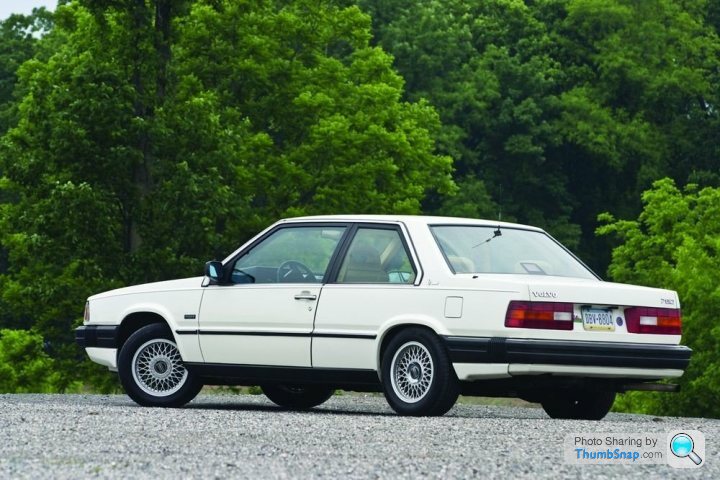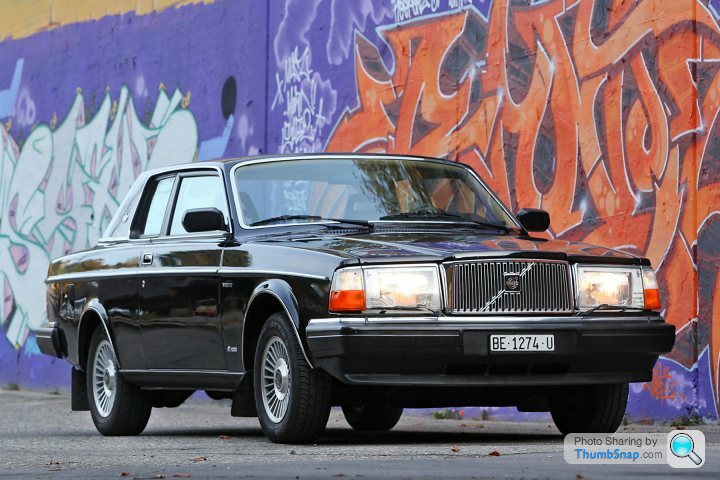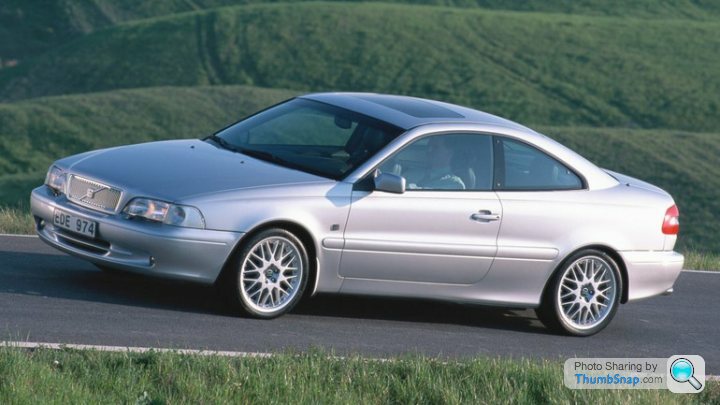PH Origins: Catalytic converters
Catalytic converters made their mark on automotive history in the 1970s - but the concept is far older than that...

On August 12, 1908, the first production Model T was completed at the Ford Piquette Avenue plant in Detroit. It marked the dawn of the era of the affordable, mass-produced automobile. In 1909 alone, a total of 10,660 would be built.
Even prior to the arrival of the mass-market Model T, however, concerns were already being raised about the emissions produced by this new breed of 'motor vehicle' in urban areas - particularly given that electric cars, which were relatively common at the time, were entirely unobtrusive.
'There is absolutely no odour connected with an electric vehicle,' wrote Pedro Salom, chemist and promoter of electric transport, in 1895. 'All the gasoline motors we have seen belch forth from their exhaust pipe a continuous stream of partially unconsumed hydrocarbon in the form of a thin smoke with a highly noxious odour.
'Imagine thousands of such vehicle on the streets, each offering up its column of smell as a sacrifice for having displaced the superannuated horse - and consider whether such a system has general utility or adaptability.'

Many authorities also took note of these issues, often enforcing rules about the minimum expected standards of performance of combustion-powered vehicles. For example, in Berlin in 1902, regulations were announced that stated 'all vehicles must work safely and excessive noise, smoke or steam, and smells are not permitted.'
As the number of vehicles on the roads rose - by 1910, another 19,050 Model Ts had rolled out of the factory - the subject of increasing emissions concerned many. Among those to first acknowledge the need for methods to control vehicle exhaust fumes was Michel Frenkel, a French chemist and inventor. Frenkel, putting his expertise with chemicals and reactions to good use, subsequently came up with a way to 'deodorise the exhaust gases of automobile engines and the like'.
'The process consists essentially in firstly diluting the exhaust gas by a strong stream of air, produced - for example - by the means of a motor fan,' wrote Frenkel in his patent application dated April 1909. 'This dilution having the effect to first ensure the presence of essential oxygen to obtain the complete combustion of said exhaust gases.'
Frenkel was effectively describing what would now be regarded as 'secondary air injection', in which air is fed into the exhaust system of a vehicle. The oxygen contained within this air allows the remaining fuel in the exhaust gas to combust, greatly reducing carbon monoxide and hydrocarbon emissions.
More remarkably, though, was the fact that this was only the first stage of Frenkel's proposed set-up. After the 'proportion of malodorous gases that escape combustion' had been lowered, the remaining fumes were directed into another container.
Then, Frenkel explained, exhaust gases would 'circulate in tubes or meet surfaces forming baffles, which tubes or surfaces serve as supports for catalyst materials, by means of which the combustion of said gases can take place in a progressive and complete manner.'

Frenkel envisioned using catalysing plates within the housing of the 'deodoriser', for which he proposed two methods of fabrication. The first involved using clay or powdered asbestos, which would then be mixed with platinum chloride, ammonium chloride, gum and water.
The resulting mixture would then be moulded, and reduce as it dried, resulting in a slab or disc with platinum deposited throughout it. Holes would then be drilled through it, in order to increase the surface area and allow the mixture to flow more easily throughout the converter assembly.
Alternatively, Frenkel suggested using porous porcelain which would be mixed with a catalytic substance before being formed, dried and reduced. Hollow slabs were also proposed, in order to avoid excessive restrictions to the exhaust flow. The exhaust gas would flow through these slabs, reactions would take place and noxious gases would be converted into far less harmful substances.
'It is possible to use all the metals or substances known at present in chemistry and in particular nickel, copper or platinum,' added Frenkel. He also detailed methods for keeping such a catalytic converter assembly cool, noting that 'the combustion of the exhaust gases in the muffler in contact with the catalytic materials give rise to considerable release of heat'.
Frenkel's concept of 'Process and Apparatus for Deodorising Exhaust Gases of Explosion Engines' was reportedly showcased to a public audience but appears to have gone no further - no doubt due to the complexities of keeping such a converter in functioning condition, given the various fuels and fuelling-related issues of the era.
Industrial emissions were, at any rate, soon to become the more prominent issue. Smog, caused by ever-increasing industrial activity and the use of coal- and wood-fired heating in homes, was a serious problem in the early 20th century; one particularly bad smog, in Glasgow in 1909, resulted in the deaths of 1,063 people alone. In most cases, the fatalities were the result of smoke inhalation.

Experimentation with catalytic converters would continue but it took the efforts of another French chemist and engineer, Eugene Houdry, to significantly advance the technology. Houdry had long been studying fuels and was well recognised for his development of the catalytic cracking process - which was used to convert crude oils into more desirable gases, fuels and other products.
Houdry, who had served in World War I and moved to the US in 1930, had established a company to produce cracking equipment for US companies. As the amount of industrial activity and road traffic in the US continued to swell, however, Houdry became increasingly concerned by the rapidly worsening air conditions that resulted from pollution. On the automotive front alone, the number of vehicles on US roads rose from 31 million in 1939 to 71 million in 1959. Consequently, particularly in urban areas, smog was once again becoming a real problem.
In order to combat this ongoing and health-threatening issue, Houdry established the Oxy-Catalyst Company in 1940; its aim was to design and develop catalytic converters that could be used for both industrial and automotive applications alike. Houdry had patented several catalytic converters previously - for industrial use - but, in late 1949, submitted his first that was specifically designed for use with automotive engines.
There was, unfortunately, one key problem that Houdry could not get around. Lead, which was added to fuel to prevent knock in engines, would quickly poison the converter. Leaded fuel was commonplace, so catalytic converters simply couldn't be used in the mainstream market.
The air quality in American cities continued to worsen and, by 1965, the government had introduced the 'National Emissions Standards Act' in an effort to cut vehicle emissions. It was an amendment to the 'Clean Air Act' of 1963 and established the first regulations for vehicle emissions - which were due to come into force in 1968.
Catalytic converters would help manufacturers meet the new targets but, with leaded fuel still being the common choice, they remained an unsuitable option. Instead, manufacturers had to resort to increasingly lower and lower compression ratios, sub-optimal ignition timing and exhaust gas recirculation systems in order to meet the requirements. Engine performance and efficiency fell dramatically, as a result, and these techniques were not sustainable.

That didn't stop the government continuing to tighten emissions regulations, but the manufacturers were still facing the impossible task of controlling hydrocarbon, carbon monoxide and nitrogen oxide emissions - which catalytic converters could easily reduce. Lead was also known to cause significant health problems and its use was further becoming frowned upon.
Fortunately, in 1970, the Environmental Protection Agency introduced another Clean Air Act. This imposed restrictions on environmental lead levels, among other pollutants - and further required that manufacturers reduce hydrocarbon and carbon monoxide emissions by a whopping 90 per cent by 1975.
The government realised that many of the issues stemmed from lead in the fuel, which led to both unwanted emissions and an inability to use catalytic converters. Consequently, new rules were introduced and unleaded filling stations began being rolled out across the US.
Several companies had been testing and trialling catalytic converters, including Engelhard - which is credited with developing the first production catalytic converter in 1973 - and General Motors. Now, with the fuel issue overcome, the systems began being adopted by Ford and GM in the mid-1970s.
The use of catalytic converters spread quickly to other companies, in part thanks to the ongoing phase-down of leaded fuel, and they soon became a standard and essential part of any emissions control system. The wider availability and adoption of electronic fuel injection also made it far easier to keep a catalytic converter within its operating range, subsequently making them an even more viable and effective option for manufacturers.
By 1993, as part of the new 'Euro 1' emissions regulations, they had been made compulsory on all new cars sold in Europe - and the introduction of catalytic converters alone, in the UK, is credited with a 45 per cent reduction in harmful emissions.
How old are we talking? Carb or injection? Are the plugs showing it's running rich? What did Mr MOT say last time, or is it too old to need a test/emissions?
I read there is like 3 top 7 grams of Platinum in these so that is like 100 to 230 GBP worth in it.
Cat converts nasty CO gases into "friendly" CO2, which improves urban air quality significantly ..... good thing!!
CO2 emissions increase, and are identified as a contributor to global warming, as a greenhouse gas.
Governments tax based on CO2, and target reductions for manufacturers.
Hybrid and full-electric vehicles marketed to reduce point of use CO2 emissions ....... full effects of manufacturing costs, energy consumption, and pollution yet to be assessed, as well as the power required to charge and then responsibly recycle vehicles and batteries through the full cradle to grave cycle.
Cat converts nasty CO gases into "friendly" CO2, which improves urban air quality significantly ..... good thing!!
CO2 emissions increase, and are identified as a contributor to global warming, as a greenhouse gas.
Governments tax based on CO2, and target reductions for manufacturers.
Hybrid and full-electric vehicles marketed to reduce point of use CO2 emissions ....... full effects of manufacturing costs, energy consumption, and pollution yet to be assessed, as well as the power required to charge and then responsibly recycle vehicles and batteries through the full cradle to grave cycle.
"In 1976 Volvo Cars presented a world first in the environmental area – the three-way catalytic converter with Lambda sensor for exhaust emission control. Today, 30 years later, virtually all petrol-engined cars built around the world are fitted with this ingenious and environment-saving component. Just as indispensable for the environment as the three-point seat belt, another Volvo innovation, is for safety.
"The most significant breakthrough ever made in the control of vehicle exhaust emissions”. So said Tom Quinn, chairman of the California Air Resources Board (CARB), when the 1977 model of the Volvo 244 equipped with a Lambda sensor system was launched on the American market in the autumn of 1976, and his words remain true to this day.
This was the first truly effective answer to the problem of cleaning vehicle exhaust emissions, especially of nitrogen oxides, and the principle employed in present-day cars is still the same. But it was a long journey, and the work required was laborious.
Volvo’s promise to take action
Back in the late 1960s people started thinking about vehicle exhaust emissions. By increasing the amount of air entering the engine and pre-heating the intake air it was possible to slightly reduce harmful substances, but nowhere near as much as was desirable. Early forms of oxidising catalytic converters were used, for instance.
In 1972 a big, bold step was taken by Pehr G Gyllenhammar, at that time CEO of AB Volvo, who at the global environmental conference in Stockholm conceded that motoring made a major contribution to the steadily increasing pollution of the environment.
The outcome of that meeting was Volvo’s environmental declaration, which still applies to this day and which read:
– Volvo does not intend to defend cars and motoring at any price and in every context.
– Cars are, however, an unavoidable part of our everyday transport system.
– It is in Volvo’s interest for cars not to cause injury or damage.
– Volvo is responsible not just for ensuring that its products are modes of transport that work well but also
that they work in a broader context – in our environment, what we today call sustainable mobility.
Around the same time, Volvo engineers discovered that the unregulated oxidising catalytic converter which was about to be launched could, under certain circumstances, be made to treat hydrocarbons (HC), carbon monoxide (CO) and nitrogen oxides (NOx) infinitely more effectively than previously.
Work on increasing this capability by regulating the fuel/air mixture in the narrow range in which the ratio for the catalytic converter was optimal began.
The man behind Volvo’s Lambda sensor system, Stephen Wallman, recalls:
”The components we used in the technical solution already existed, but were used in a different way and in other areas. The trick was to link them together into a complete system and get them to work in a petrol-engined car.”
The effective breakthrough
The key to the whole thing was a small thing the size of a finger. The oxygen-sensing probe was positioned in the exhaust pipe between the engine and the catalytic converter. It quite simply measured the oxygen content of the exhaust emissions and sent its information to the engine's management system, which in turn adjusted the fuel/air mixture to keep within the narrow "window" which around Lambda=1 – approximately 14.3:1 – gives the catalytic converter optimal efficiency. In this range the conversion of the engine’s exhaust emissions in the catalytic converter is so efficient that more than 90 per cent of the harmful gases hydrocarbons, carbon monoxide and nitrogen oxides formed in combustion are eliminated in the catalytic converter.
In 1977 California introduced new strict exhaust emission limits for the three harmful gases at the levels: hydrocarbons 0.41 g/mile; carbon monoxide 9.0 g/mile; nitrogen oxides 1.5 g/mile. In those days, this was the world's strictest emission legislation and ever since, California has pushed the exhaust emission requirements further to lower and lower levels.
The Volvo cars with three-way catalytic converters and Lambda sensors were measured at hydrocarbons 0.2 g/mile; carbon monoxide 3.0 g/mile; nitrogen oxides 0.2 g/mile! Remarkably low values and good margins, in other words. The low emissions of nitrogen oxides in particular were sensational and this work was duly awarded. Volvo received the environmental award from the environmental council of President Carter.
Indispensable today
For the Lambda sensor to work, it was essential to have a functioning catalytic converter and lead-free petrol, as is still the case today. When the Lambda sensor was introduced, lead-free petrol was only available in North America and Japan. Today it can be found everywhere, and is just as indispensable as the Lambda sensor and catalytic converter.
The original Lambda sensor system has been enhanced over the past 30 years to reduce exhaust emissions even further. As Tom Quinn rightly said, it is inventions of this kind that move industry and humanity forward. It has been possible to take many more small steps in the treatment of exhaust emissions since 1976 and a Volvo engine of today eliminates more than 95 per cent of the harmful emissions.
Today, the focus of the automotive industry is more concentrated on cutting the levels of carbon dioxide emissions.
”Although there were statutory requirements we had to meet, it was Volvo's ambition, and our own, to achieve a real breakthrough that drove us to this highly successful solution," concludes Wallman, the "father" of the sensor."
https://www.media.volvocars.com/global/en-gb/media...
The Volvo cars with three-way catalytic converters and Lambda sensors were measured at hydrocarbons 0.2 g/mile; carbon monoxide 3.0 g/mile; nitrogen oxides 0.2 g/mile! Remarkably low values and good margins, in other words.
California - 1977 - 5.6g/km CO, .25g/km HC, .93g/km NOx (1.18g/km HC + NOx)
Volvo - 1977 - 1.86g/km CO, .124g/km HC, .124g/km NOx (.25g/km HC+NOx)
Euro1 - 1992 - 2.7g/km CO, .97g/km HC + NOx
Euro2 - 1996 - 2.2g/km CO, .5g/km HC + NOx
Euro3 - 2000 - 2.3g/km CO, .2g/km HC, .15g/km NOx
Euro4 - 2005 - 1.0g/km CO, .1g/km HC, .08g/km NOx
Euro5 - 2009 - 1.0g/km CO, .1g/km HC, .06g/km NOx
Euro6 - 2014 - unchanged
So the 1977 Cali standards are utterly s
 t compared to even 1992 European - double the CO, bit more HC+NOx. The Volvo would be well within Euro3, and is only double today's NOx standard... But, as we know from WLTP, the testing regime has a lot to do with the ultimate results...
t compared to even 1992 European - double the CO, bit more HC+NOx. The Volvo would be well within Euro3, and is only double today's NOx standard... But, as we know from WLTP, the testing regime has a lot to do with the ultimate results...And that'd be on the ol' mechanical K-Jetronic, I think...
The three-way converter itself was developed by a team at Engelhard, too, along with many other systems (it had collaborated with Volvo and others for some time in the development of catalytic converter set-ups). Perhaps the oxygen-sensing configuration could be something to cover another time, though.
A valid and useful addition to the conversation, though, regardless!

If that were correct we should all have been driving Saabs around polluted city centres to help out.
(I bet someone can find the ad)
It was a very tightly-qualified claim, of course. IIRC, there were fewer unburnt hydrocarbons coming out that then average urban road-level air... Probably not that hard, back then, for something with lambda and cat when the majority didn't have.
I'm just curious as I have an 80's American car that was originally fitted with a catalyst, which has long since been removed.
Gassing Station | General Gassing | Top of Page | What's New | My Stuff











 |https://thumbsnap.com/LZHz7mB5[/url]
|https://thumbsnap.com/LZHz7mB5[/url]